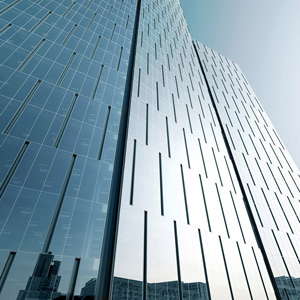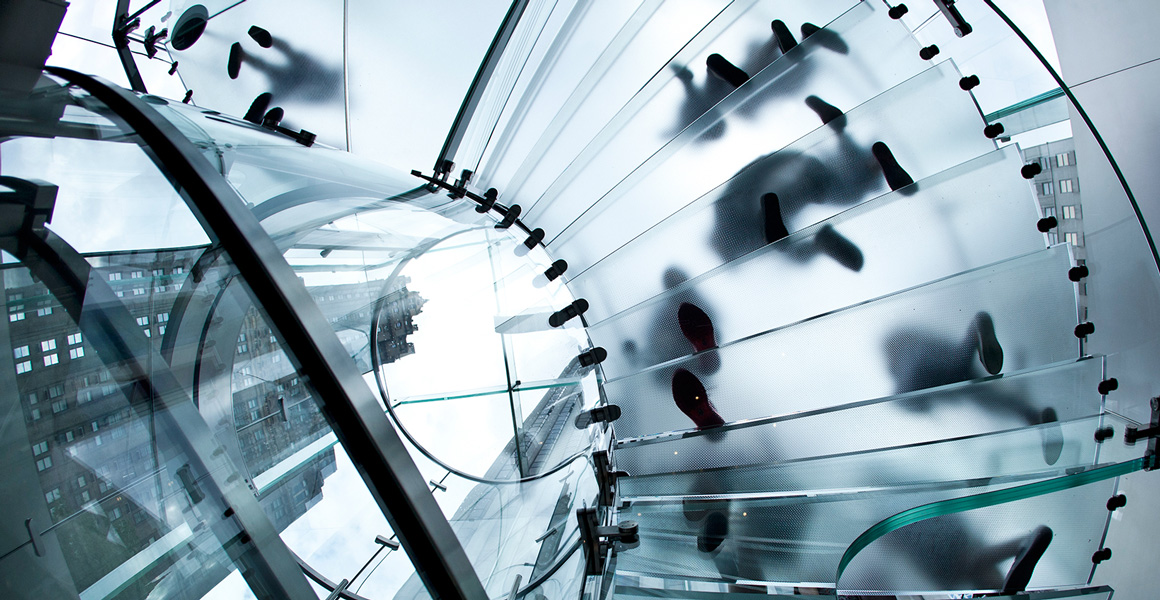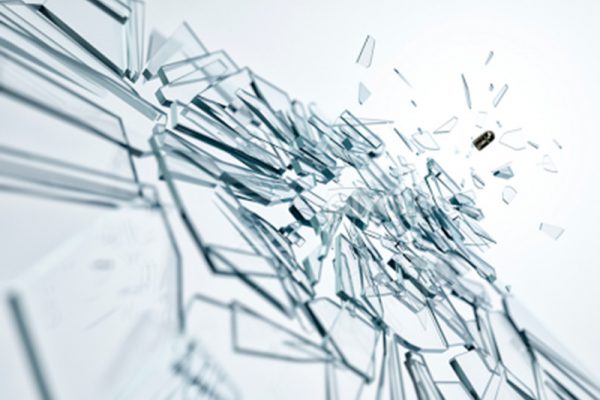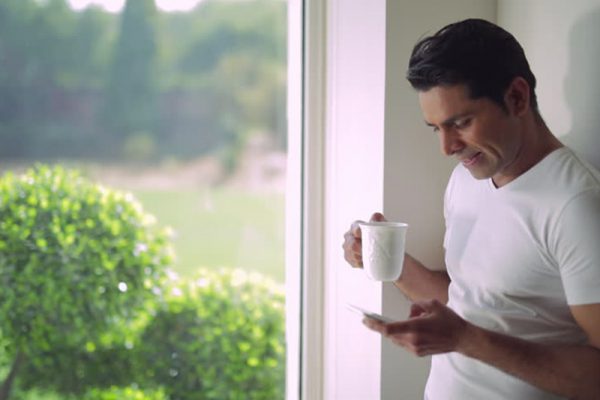3) Safety against Impact and Fire and Earthquake:
One of the most important benefits of laminate glass is its safety against impact, and accidents such as earthquakes and fires. Normal and tempered glass are broken and damaged by impact and in case of earthquakes and a fire due to severe mechanical and thermal stresses. This creates a lot of danger and the destruction of the glass wall causes the penetration of fire to the other parts and increasing the chances of robbery. Laminated glass is resistant to impact and extreme mechanical and thermal pressures because of the existence of PVB and if it is broken it does not disintegrate and the parts remain steady. This advantage eliminates the possibility of penetrating fire from glass to other parts during the fire and the intrusion of robbers.
Preventing the disintegration of glass pieces in high-rise buildings is one of the important issues of safety during an earthquake. This feature of laminated glass makes this type of glass suitable for use on the ceiling of swimming pools, public areas, high buildings, windows of stairwells, etc.
4) Resistance to Ultraviolet Diffusion or U.V:
The sun is composed of three main spectra, including ultraviolet light, visible light and infrared light. UV is part of sunlight with a wavelength between 290 and 380 nm, which is very harmful to human health, and its long-term exposure and radiation can change the color of the furniture, carpet and curtain.
The visible light is 380 to 780 nm in diameter, visible to the human eye, and is not harmful and only its excessive radiation is not suitable in some environments. Infrared light is 790-3000 nm. This part of the sunlight is partly felt in the heat. Heat transfer occurs through radiation by these waves. About two-thirds of the energy input and output through the window flows as radiation in the infrared spectrum.
The presence of PVB between the laminate glass plies makes this glass resistant to U.V radiation. By increasing the thickness of the PVB, the insulating of this glass increases compared to U. V, and the use of 1.52 mm thick PVB in glass will prevent U.V. infiltration up to 95%. Using Sunergy and Low-E glass together with other laminate glass will completely prevent harmful U.V and infrared radiation, and play an important role in maintaining human health and furniture’s color fastness.







 - 2018 ©
- 2018 ©